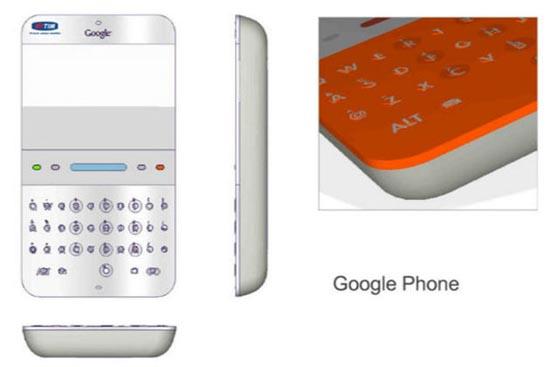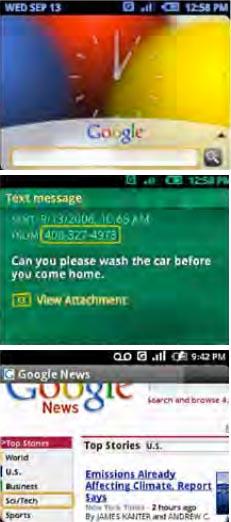
We all know the look of the original Android phone to hit the market, the T-Mobile G1, with its four physical keys, trackball and sliding QWERTY keyboard. However, documents from the current lawsuit between Oracle and Google show that the original "Google Phone" concept from 2006 was just a tad different. As you can see above, the device featured a portrait keyboard and a a set of navigation keys below the display. Although it's not known what kinds of specs Google may have had in mind for this particular model, the docs do mention some of the features the company expected the lowest-end devices to feature at least a QVGA display, 200MHz processor, 64MB ROM/RAM, miniSD, 2-megapixel camera with dedicated shutter key and a pair of soft menu keys.
A separate court document reveals that Google was interested in subsidizing a data plan for T-Mobile back in 2006. The doc explains that T-Mobile would offer users an unlimited data plan for $9.99 per month, and in exchange Google would not take any commission from referring customers to T-Mo's online store. Google estimated that its services would use up about 15MB per month. Of course, when the G1 did debut on T-Mobile in 2008, it came with $25 and $35 data plans.
It's interesting to see what Google had in mind for a phone all the way back in 2006, and this concept looks fairly similar to one of the Android prototype devices that was caught floating around in the wild in late 2007. Of course, there aren't many Android devices on the market today with that design, though there are devices like the Motorola Admiral that still feature a portrait form factor. What do you all make of the concept? Would you be interested in seeing more new Android phones with a similar form factor or are you digging the all-touch devices with huge displays like the Galaxy Nexus and Note?
UPDATE: More documents from the case between Oracle and Google have surfaced, this time showing images of what Google had done with Android up to May 2007, the month which the documents are labeled. Below are just a couple of the screenshots showing the home screen, messaging app and browser. As you can see, the OS was likely meant for devices with portrait keyboards like the one above, and this very early version of Android is quite a bit different than what we've got with Ice Cream Sandwich today. You can check out quite a few more shots showing things like the dialer, maps and notes apps right here.

Via The Verge (1), (2), (3)